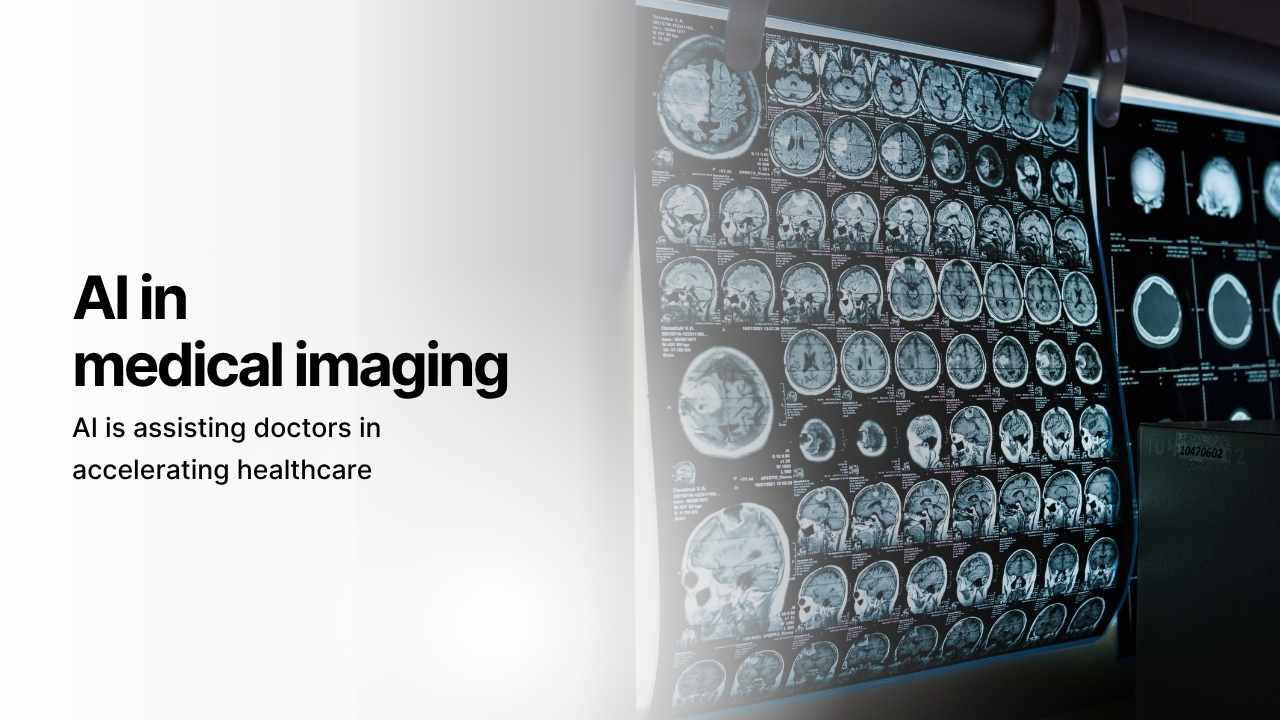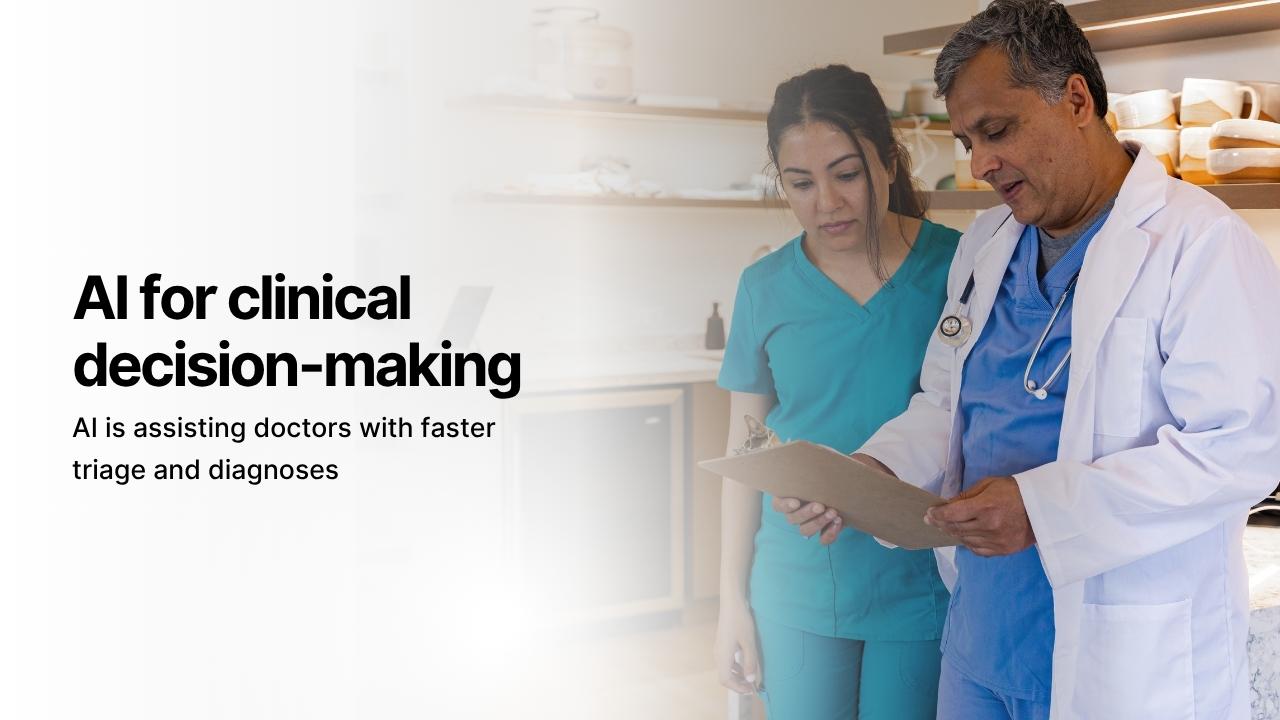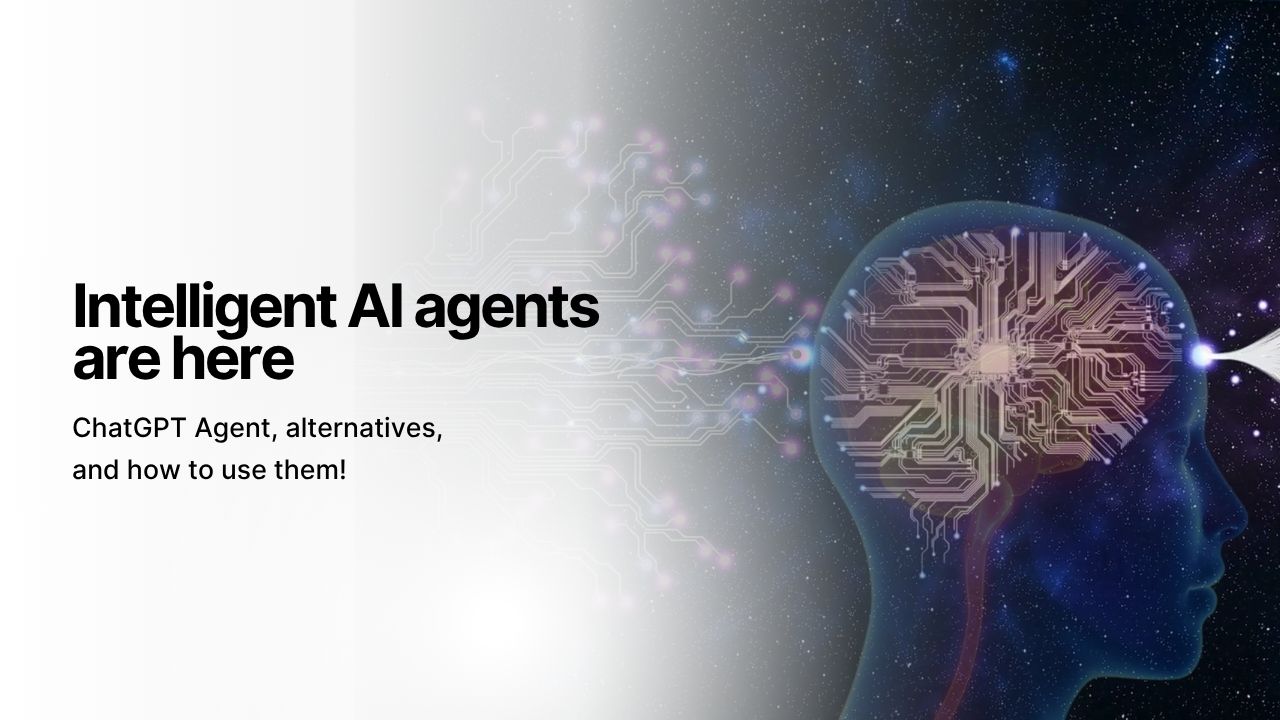Artificial intelligence (AI) is rapidly transforming numerous sectors, and healthcare is no exception. Among the most promising applications of AI is its integration into medical imaging. For years, radiology relied on human expertise and traditional software tools. Hospitals, clinics, and researchers are using AI technology not only to improve diagnostic accuracy but to reshape how healthcare is delivered at every level.
Why AI in medical imaging matters
Here’s a reality check: doctors face massive workloads, imaging machines create more data than ever, and precision is everything. Even a small improvement in image clarity or analysis can mean faster diagnoses, better treatments and improved outcomes for patients.
Thanks to the power of AI, in today’s world, MRI scans are clearer, elusive tumours no longer go undetected, and radiologists can now have a virtual assistant highlighting issues in seconds.
How does AI help in medical imaging?
At its core, AI in medical imaging means smart algorithms process, enhance, and interpret images from X-rays, CT, MRI, and more. Among these, Generative AI systems that create, complete, or clean up data are making the biggest waves. These systems:
- Reduce noise: They clean up blurry or grainy scans.
- Reconstruct missing details: When only part of an image is captured (say a rushed or low-dose scan), AI can fill in the gaps reliably.
- Highlight anomalies: By spotting signs of diseases, injuries, or unusual patterns, AI assists radiologists in catching what might be missed.
- Generate synthetic data: This helps train new AI models and aids research, especially when real-world data is scarce.
Think of it like having a skilled digital apprentice working alongside the radiologist, speeding up tasks, improving accuracy, and boosting confidence in every diagnosis.
What are some real-world applications of AI in medical imaging?
Here’s how AI in medical imaging is already making an impact:
Image enhancement and reconstruction
- Noise reduction in MRI and CT scans leads to clearer, more trustworthy results.
- Super-resolution imaging upgrades older, lower-quality images, giving doctors new insights without needing new scans.
- Reconstruction from partial data allows for usable scans even in challenging situations (like patients who can’t hold still).
Anomaly detection and diagnosis
- AI identifies tumors, fractures, or early-stage diseases that might otherwise go unnoticed.
- Pattern recognition offers another set of “eyes” for radiologists, often picking up on subtle indicators.
Synthetic data generation
- AI makes realistic images that train future AI tools, enhancing the accuracy of next-generation solutions, even in rare or complex cases.
Why does AI in imaging matter?
- Better outcomes: Higher diagnostic accuracy means finding diseases earlier and treating them more effectively.
- Efficiency gains: Automated enhancements let radiologists work faster and more efficiently, reducing burnout and systemic bottlenecks.
- Cost savings: Fewer repeat scans and smarter triaging lead to lower costs for both healthcare providers and patients.
What are the main challenges for AI in medical imaging?
While the potential of AI in medical imaging is immense, there are also challenges that need to be addressed. One of the main challenges is the need for large, high-quality datasets to train AI algorithms. Medical images can be expensive to acquire and label, and there is often a lack of standardized data formats.
Another challenge is the need for regulatory frameworks to ensure the safety and effectiveness of AI-based medical imaging tools. These frameworks should address issues such as data privacy, algorithm bias, and clinical validation.
Despite these challenges, the opportunities for AI in medical imaging are vast. As AI technology continues to advance, we can expect to see even more innovative applications emerge. AI has the potential to revolutionize medical imaging, making it more accurate, efficient, and personalized.
Companies like GoML are at the forefront of this revolution, developing cutting-edge AI solutions for medical imaging. By leveraging the power of AI, we can improve patient outcomes and transform the future of healthcare.
What are some high-impact case studies for AI in medical imaging?
GoML is at the forefront of this transformation, delivering practical AI solutions with measurable impact. Here are three real-world cases that highlight its leadership:
1. Automated lesion detection in mammography
A major hospital network used GoML’s AI models to review thousands of mammograms. The system flagged suspicious lesions faster than human staff, catching early-stage cancers that might have gone unnoticed. The result: more lives saved, faster interventions, and greater peace of mind for patients and staff alike.
2. MRI Artifact Reduction and Clarity Enhancement
GoML partnered with a radiology imaging center to enhance MRI scans that suffered from motion artifacts (issues caused by patient movement). By applying its generative AI framework, the team consistently produced sharp images where key neurological features were previously obscured. Diagnoses became more reliable, reducing the need for expensive rescans and boosting confidence in clinical decisions.
3. AI-Driven CT reconstruction for dose deduction
A regional health system approached GoML to address concerns about patient radiation exposure from frequent CT scans. GoML’s algorithms could reconstruct high-quality images from scans using significantly lower radiation doses. Not only did this approach reduce long-term health risks, it also saved on operational costs by cutting down the number of repeat procedures.
How can hospitals and labs start with AI in medical imaging?
Are you envisioning workflows where images are processed and interpreted in real time and predictive analytics warn of issues before symptoms even arise? As AI in medical imaging continues to evolve, we move closer to this vision.
GoML’s commitment to advancing these AI applications in high volume healthcare delivery environments ensures that hospitals, clinics, and research institutions have a partner ready to tackle the toughest implementation challenges. If you want to see this technology at work or learn how it can fit your healthcare organization, explore the variety of case studies available on the GoML website.
Ready to see firsthand how you can adopt AI for medical imaging? Schedule an executive AI briefing for your medical and tech teams.







